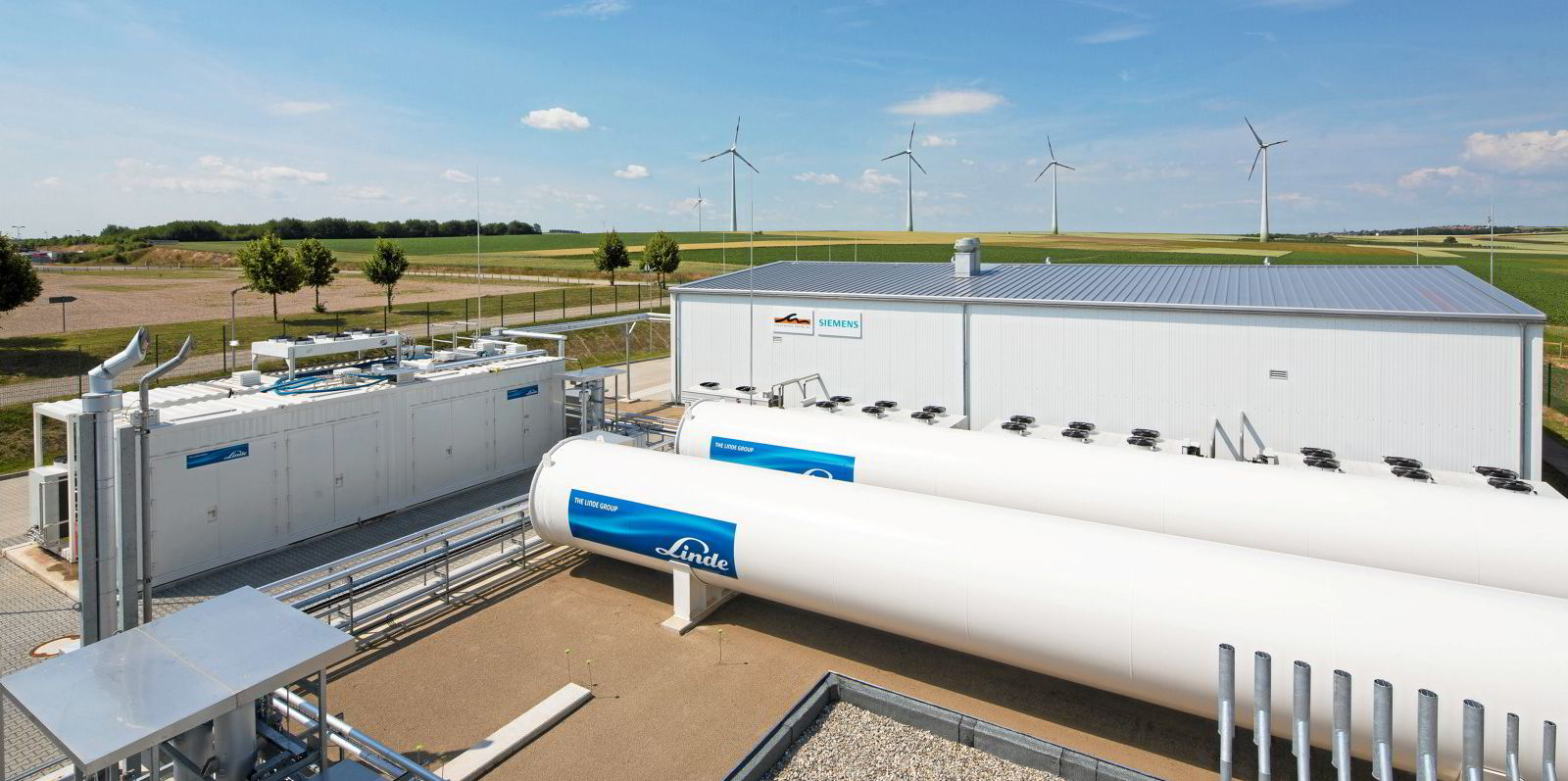
Energiepark Mainz in Germany, which converts surplus electricity from wind farms to hydrogen.Photo: Getty
Clean hydrogen will be cost-competitive with grey H2 by 2030 — without a carbon price
Climate think-tank Energy Transitions Commission sets out the future roles and pathways for clean hydrogen, the vast majority of which will be green, not blue.
The cost of green hydrogen is expected to see “dramatic cost reductions” this decade as the cost of renewable energy and electrolysers fall — to the point where it can compete with grey hydrogen even without a carbon price, according to climate business think-tank Energy Transitions Commission (ETC).
Today, green hydrogen is more expensive than grey hydrogen, but cost trends indicate that green hydrogen can become cheaper than grey hydrogen in the next decade, according to ETC.
In favorable locations, the cost of green H2 is expected to fall to $1 per kg by 2030, according to the ETC report, Making the Hydrogen Economy Possible: Accelerating Clean Hydrogen in an Electrified Economy.
The cost of producing grey hydrogen — made from unabated natural gas or coal, and pumping 830 million tonnes of CO2 into the air each year — is currently between $0.70 and $2.20/kg, largely depending on the price of natural gas or coal. This is not expected to change this decade.
The ETC calculates that the cost of blue hydrogen — grey H2 with carbon capture and storage (CCS) — would therefore be between $1.3-2.9/kg per kg today, and this price will only fall slightly by 2030 when CCS is scaled up.
The study adds that its “base case scenario” assumes that by 2050, 85% of clean hydrogen would be green, with only 15% blue.
This could be seen as a major blow to an oil and gas industry that is hoping to decarbonise its natural-gas operations via blue hydrogen, although the ETC points out that the mid-century annual demand for blue hydrogen would be slightly higher than today’s yearly grey hydrogen production — 120 million tonnes versus 115 million.
The report also states: “In all scenarios, blue hydrogen is likely to play a major role in the 2020s, in particular through the conversion of grey hydrogen facilities to blue hydrogen. However, build-up of new blue hydrogen facilities will likely slow in the 2030s as green hydrogen becomes the lower-cost option in most locations.”
By 2050, the global demand for clean hydrogen will reach 500-800 million tonnes per year and account for 15-20% of total final energy demand (including from H2 derivatives such as ammonia and synthetic aviation
Likely usage of clean H2
Clean hydrogen is “highly likely” to be needed for power storage, aviation, shipping and steel production, says the report. But its potential use in heating buildings, non-steel high-temperature industrial heat and long-distance trucking — sectors that many in the hydrogen industry are eyeing — is ‘still unclear’.
The ETC predicts that in 2050, clean hydrogen will account for 80% of the shipping industry’s energy demand — the vast majority of which will be in the form of green ammonia — and 60% of the aviation sector’s final energy demand, mainly in the form of synthetic fuels produced by combining H2 with captured CO2, with pure hydrogen used for some short-distance flights.
Clean hydrogen will account for 50% of final energy demand in the steel industry by 2050, the reports adds, with smaller contributions in other industries: cement (30%), heavy-duty transport (20%), chemicals (20%), heating (15%), and rail (10%).
It says that hydrogen use in light-duty transport, such as cars and vans, will be “minimal”.
And at least 100 million tonnes of green hydrogen will be produced annually for long-term energy storage when there is a surplus of variable renewable energy supply, it adds.

